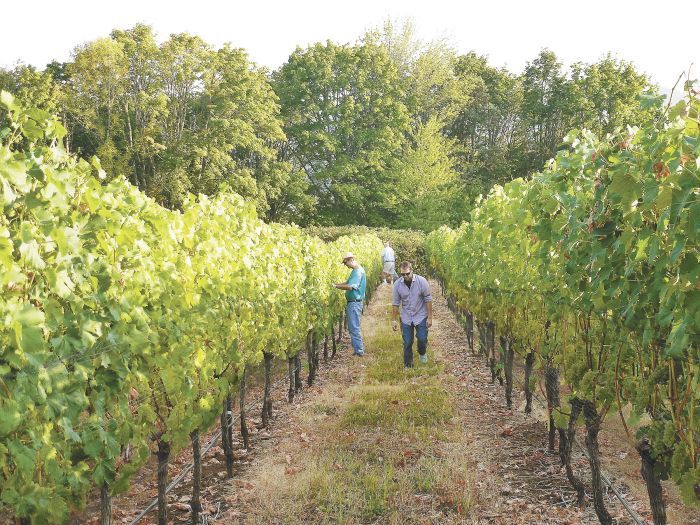Lessons Learned

By Jessica Cortell
Wow, what a year 2013 was. After the cool vintages of 2010 and 2011, the past year had us fooled. We had higher than average heat in April, May, June and July, and then it cooled off a bit in August. Maybe that should have been a hint…
Along with everyone else, I thought it was going to remain hot all the way through to the end with high Brix and an early harvest. The students in my vineyard practices class at Chemeketa Community College worked with the vines from pruning all the way to harvest. Throughout the year, we discussed how we might adjust our vineyard management practices based on what we believed was a hot vintage.
The major lesson learned was never second-guess September, in which we had a surprise record six inches of rain. This caused some rot and dropping sugars, and the fruit struggled to recover in time for harvest.
Along the way, I wanted the students to have take-home messages they could use in the future as a reminder of all they had learned in 2013’s growing year. Here are five of them:
Pruning is a powerful tool
With winegrapes, we often prune 90 percent of the previous season’s growth, leaving a one-year-old cane to replace last year’s fruiting cane. Pruning is a tool where we can adjust vine vigor — rate of shoot growth — as well as the structure of the vine. Vines are very responsive to leaving a couple additional productive buds or pruning off several extras; both influence vine vigor.
Know how much is in the bank
This message doesn’t have to do with money but with the “currency” of carbohydrate and nutrient reserves stored over the winter in the trunk and roots, supporting new shoot growth in the spring from buds left at pruning. Above, I mentioned that vines are responsive to changes in pruning; this is because the first five to eight leaves on the new shoot are supported by the reserves in the trunk and roots.
The vine is the final answer
I thought this was a great statement made by one student. Never underestimate the power of observation. If you know what to look for, the vine will tell you many things. The color, the size and the color gradient of the leaves can explain much about the vine’s vigor and health.
Timing is everything
The students didn’t understand the importance of timing until July, when the shoots started to grow a foot a week. Then it suddenly made sense as they fought with the tangled jungle of shoots. In canopy management, it is important to raise the catch wires on time and to shoot position before the tendrils grab on tightly.
Prevention is key
Sometimes it might feel like you’re fighting an invisible battle when it comes to disease management in winegrapes, because you can’t detect the early signs of disease such as powdery mildew. If you don’t fight the invisible battle and the powdery mildew spreads exponentially, then you understand why prevention is key.
Jessica Cortell received an M.S. degree in horticulture and a Ph.D in food science and technology from Oregon State. She owns her own vineyard management company, Vitis Terra Vineyard Services, and teaches at Northwest Viticulture Center in Salem.








